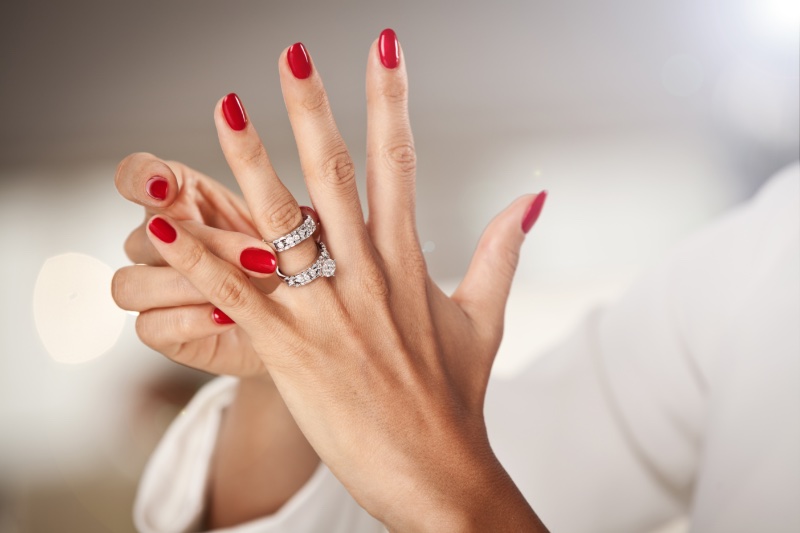
Marilyn Monroe declared that diamonds are a girl’s best friend. But diamonds are also expensive, so anyone looking for a diamond ring might want to consider lab-grown diamonds instead. Lab-grown diamonds have all the beauty of a natural diamond without the high price tag and are ethically sourced.
The global lab-made diamonds market is expected to grow at a CAGR of 8.74% from 2021 to 2028, indicative of its growing demand. Whether you’re shopping for your engagement ring or trying to find something special for someone else, we’ve got some tips on ensuring that your lab-grown diamond engagement ring is kept in pristine condition over the years.
Keep It Clean
The most important thing you can do to care for your lab-made diamonds is to clean them regularly. Cleaning a lab-grown diamond ring is similar to cleaning any other piece of jewelry, but some special considerations must be made.
First, use a soft cloth when cleaning your ring so as not to rub its surface. A mild soap and water solution is sufficient for primary cleaning purposes. If special cleaners or polishes are available, feel free to use those on the ring. Please do not use harsh chemicals or abrasives on the diamond itself. This will remove its protective coating and could cause damage over time.
Be Careful with Harsh Chemicals
You may be wondering what kind of chemicals are safe to use when cleaning a lab-grown diamond engagement ring. The answer is none. Harsh chemicals can damage the coating on the ring, which means that it could come off entirely and render your ring useless if you aren’t careful. Please don’t use bleach or other harsh cleaners because they can remove this protective layer from a lab-grown diamond engagement ring and make it more prone to scratches and chips.
Don’t forget. You’ll also want to avoid using any chemicals that might damage your actual diamond itself. Not only will they remove any coating that may still be there, but they can completely ruin your stone if you’re not careful, which would be devastating news for anyone planning on presenting it as a gift later down the road.

Be Careful Around the Heat
Avoid wearing your lab-grown diamond ring when dealing with heat, whether cooking, working around the house, or performing home repairs. The heat from these processes can cause damage to the ring, and you don’t want to ruin your investment.
When cooking, removing your lab-grown diamond engagement ring before handling food or utensils on the stovetop is best. Likewise, if you’re doing construction work around your home or yard—or any other kind of manual labor—it will be more comfortable for you (and safer) if you remove your lab-grown diamond engagement ring before getting started.
Please Don’t Wear It in Public Pools or Spas
The chlorine in pools and spas can damage your lab-grown diamond ring. The harsh chemicals, salt water, and even the temperature of the water itself will cause discoloration to your lab-grown diamond ring over time.
If you must wear it in a pool or spa, make sure to rinse off the ring thoroughly before taking it off so that no residue remains on the surface of your lab-grown diamond ring. It will help prevent potential damage to your lab-grown diamond ring.
Avoiding Hard Objects
Avoiding hard objects is the best way to care for your lab-grown diamond engagement ring. It will prevent damage from impact and scratches, the two most common ways lab-grown diamonds get damaged.
Avoiding dropping it is one of the easiest ways to keep your lab-grown diamond ring in good shape. If you drop it on concrete or another hard surface, there’s a chance that it could crack or chip because these types of surfaces can damage the stone more than softer ones like wood or carpeting would.
If you’re doing chores around the house (like cleaning), make sure not to bang your lab-grown diamond engagement ring against anything metal or sharp—like a nail sticking out from your wall. Doing this kind of thing could cause permanent damage to the stone, so be careful when doing household tasks around your new piece of jewelry, use rubber gloves if possible, and only use soft cloths and sponges when cleaning up after yourself.

Store Your Lab Grown Diamond Ring Separately
One of the essential tips to keep in mind is that you should store your lab-grown diamond ring separately from other jewelry. Though it may seem common sense, you can never be too careful when keeping jewelry.
To avoid scratching or damaging your ring, make sure that you always store it in a separate box or bag. This way, the damage will be isolated and kept at minimum levels if something happens to one piece of jewelry that gets scratched or dented while being laid next to another more fragile bit.
Also, note that you shouldn’t store different types of diamond jewelry together because they could scratch each other over time. Furthermore, don’t put silver or gold pieces alongside platinum ones due to their differing rates of tarnish.
As for storing different types of gemstones—such as sapphires—in the same container as your lab-grown diamond engagement ring, again, don’t do it.
Get Your Lab-Grown Engagement Rings Professionally Cleaned Regularly
The best way to care for your lab-grown diamond engagement ring is to get it cleaned and inspected regularly. It will extend the life of your ring and make it sparkle like new every time. According to data, the interest in lab-made diamond engagement rings grew by 63% in March this year, which means it may see a surge in price because of the increased demand. It’s best to maintain your diamond professionally.
How often you need to get your ring cleaned depends on how often you wear it. We recommend getting a professional cleaning once a month if you wear it daily. For those who only wear their engagement rings on special occasions, once every three months should be sufficient.
If you have the budget for frequent cleanings by a professional jeweler, then, by all means, go ahead. But if not, there are ways that you can do this yourself at home with some basic supplies.
Just keep in mind that doing so may void any warranty from the manufacturer or damage the integrity of the stone itself over time due to improper handling techniques, such as using chemicals or abrasives which could scratch away at its surface even more quickly than usual.
Conclusion
As we have seen above, you can do many things to ensure your lab-grown diamond engagement ring stays at its best. Most importantly, you take care of it like a natural diamond. If you follow these tips and always keep your lab-grown diamond away from harsh chemicals or extreme temperatures, then there’s no reason it won’t last forever.





